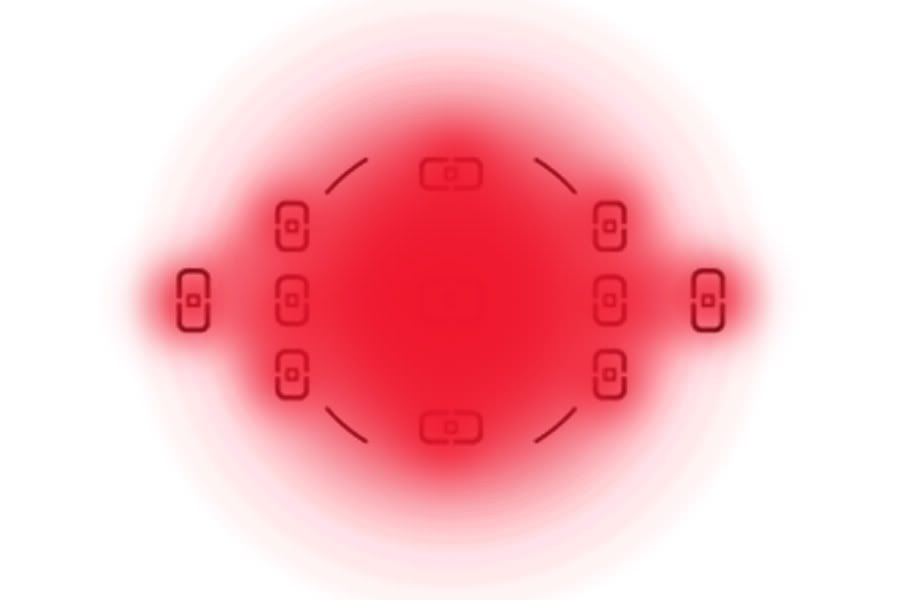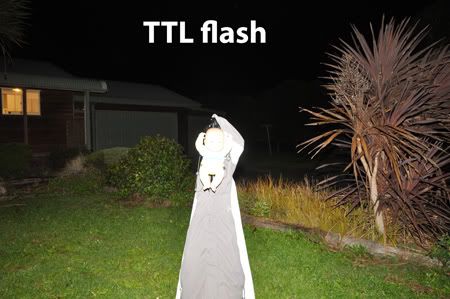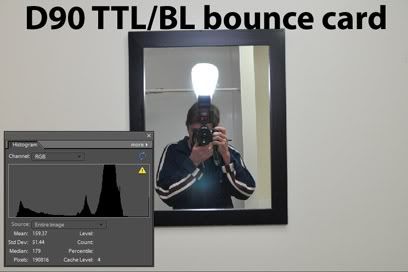{ Work in progress - more to come !}
Flash is probably the hardest concept of photography for beginners to understand .
I guarantee when you have finished reading and have understood this article you will know more about flash than many professional photographers because many people who charge for their photography really only know what's necessary to get the results they want , and not much more !
The most important thing to understand about flash is that when you use it you are in fact taking two exposures in one .
There are two basic modes of flash :
1.) Manual and
2.) Automatic .
1.) Manual flash is basically where you set the power of the flash anywhere from full power (1/1) to minimum power (1/128th) - in some flashes you are limited to 1/16th as lowest power .
Each step halves the power of the previous output .
1/1 , 1/2 , 1/4 , 1/8 , 1/16 / 1/32 , 1/64 , 1/128 th power .
Some of the newer flashes allow 1/3 increments between those settings as well .
Manual flash requires the most experience and understanding and is well worth learning but I would suggest having a basic understanding of the auto modes as something to fall back on before attempting an important shoot in manual flash mode .
2 . ) Auto flash . This we'll divide into 3 sub-divisions .
a.) "A" mode
b.) "TTL" mode
c.) "TTL/BL"[Nikon] / "E-TTL" [ Canon ] .
2a.) "A" mode is present mostly on older flashes but some of the higher end modern flashes have "A" mode as an option for those who are used to working with it . Very few people use this option though it does have its uses , particularly with wireless flash when the light isn't firing in the centre of the frame and you would like the flash to measure its output itself .
This mode uses a thyristor control which works through a little 'eye' on the flash itself . The flash measures its own output through this 'eye' and switches the flash output off when it measures the right amount of light .
Since the hole it measures from is at a slightly different level to the camera lens it is better to use normal TTL when the flash is mounted on the camera .
2b.) TTL flash : "TTL" stands for "Through The Lens" which suggests the main difference to "A" mode : Instead of measuring through the eye on the flash there is communication between the camera and flash , the flash fires a weak 'pre-flash' which the camera measures "through the lens" and then tells the flash what it 'sees' so the flash knows how much power it needs to fire at for the main flash . I made a video explaining TTL flash to make this easier to understand .
With TTL flash the camera measures through a circle in the centre of the frame and tries to make that area an average gray .
It uses an area like this ...... [edit: cameras have changed with time and the newer cameras use the whole focus point diamond for TTL metering]




That's the main weakness of TTL flash that you need to keep in mind especially with direct flash and smaller subjects . Another weakness of TTL flash is that it doesn't know what you are doing with the ambient exposure so you need to dial in exposure compensation to the flash when you have the ambient well exposed . More on that in the 'advanced' section later .
This leads us to the newer auto modes ....
2c.) TTL/BL and E-TTL .
In these modes the camera still uses TTL metering to measure the flash output but it can select the area it uses to meter from .
It does this by using the matrix / pattern metering system mainly near the centre of the frame - or the "focus point diamond "[video]
and upon sending out a pre-flash it 'finds' the subject based on the pattern it 'sees' from the reflected reading it gets .
this means it is not fooled so easily by a smaller object .
While TTL flash is trying to get an average gray in the entire centre of the frame .....

Besides this advantage another strong point of these new intelligent flash modes is that they can read the distance of the subject [with certain lenses ] and use that in their calculations to determine how much light to put out , according to the distance of the subject , which makes them much more accurate than the old TTL modes .
They lose much of this advantage when the flash head is tilted - a switch in the flash head tells it to forget about using distance info so strongly [ though it still keeps it in mind ] and then it has to rely more on the reflected pre-flash reading .
This brings us to yet another advantage with these newer systems .. because they can select the area they meter off they can also select the areas they don't want to meter off ... such as ? Highly reflective surfaces - the camera can analyze the pattern it sees and decide that very bright highlights are actually highly reflective areas and disregard them from the equation ..... example :
While TTL flash darkens due to the reflections [ while taking an average reading ] ...
-->
Flash is probably the hardest concept of photography for beginners to understand .
I guarantee when you have finished reading and have understood this article you will know more about flash than many professional photographers because many people who charge for their photography really only know what's necessary to get the results they want , and not much more !
The most important thing to understand about flash is that when you use it you are in fact taking two exposures in one .
There are two basic modes of flash :
1.) Manual and
2.) Automatic .
1.) Manual flash is basically where you set the power of the flash anywhere from full power (1/1) to minimum power (1/128th) - in some flashes you are limited to 1/16th as lowest power .
Each step halves the power of the previous output .
1/1 , 1/2 , 1/4 , 1/8 , 1/16 / 1/32 , 1/64 , 1/128 th power .
Some of the newer flashes allow 1/3 increments between those settings as well .
Manual flash requires the most experience and understanding and is well worth learning but I would suggest having a basic understanding of the auto modes as something to fall back on before attempting an important shoot in manual flash mode .
2 . ) Auto flash . This we'll divide into 3 sub-divisions .
a.) "A" mode
b.) "TTL" mode
c.) "TTL/BL"[Nikon] / "E-TTL" [ Canon ] .
2a.) "A" mode is present mostly on older flashes but some of the higher end modern flashes have "A" mode as an option for those who are used to working with it . Very few people use this option though it does have its uses , particularly with wireless flash when the light isn't firing in the centre of the frame and you would like the flash to measure its output itself .
This mode uses a thyristor control which works through a little 'eye' on the flash itself . The flash measures its own output through this 'eye' and switches the flash output off when it measures the right amount of light .
Since the hole it measures from is at a slightly different level to the camera lens it is better to use normal TTL when the flash is mounted on the camera .
2b.) TTL flash : "TTL" stands for "Through The Lens" which suggests the main difference to "A" mode : Instead of measuring through the eye on the flash there is communication between the camera and flash , the flash fires a weak 'pre-flash' which the camera measures "through the lens" and then tells the flash what it 'sees' so the flash knows how much power it needs to fire at for the main flash . I made a video explaining TTL flash to make this easier to understand .
With TTL flash the camera measures through a circle in the centre of the frame and tries to make that area an average gray .
It uses an area like this ...... [edit: cameras have changed with time and the newer cameras use the whole focus point diamond for TTL metering]
This means that if the subject does not fill the centre of the frame the flash will have to fire stronger than necessary to get that average gray it wants .... this is the main weakness you need to keep in mind with TTL flash .
Here's and image taken using TTL flash with a white object in the centre of the frame - because it is reasonably large and very reflective TTL has done an ok job of the exposure .

And an average of the centre ...

Now we use a wider lens and make the same image smaller in the centre of the frame ... TTL still tries to make the centre of the frame the same average gray and to do this it has to make the smaller image much brighter and blow the highlights .

And an average of the centre again ..

That's the main weakness of TTL flash that you need to keep in mind especially with direct flash and smaller subjects . Another weakness of TTL flash is that it doesn't know what you are doing with the ambient exposure so you need to dial in exposure compensation to the flash when you have the ambient well exposed . More on that in the 'advanced' section later .
This leads us to the newer auto modes ....
2c.) TTL/BL and E-TTL .
In these modes the camera still uses TTL metering to measure the flash output but it can select the area it uses to meter from .
It does this by using the matrix / pattern metering system mainly near the centre of the frame - or the "focus point diamond "[video]
and upon sending out a pre-flash it 'finds' the subject based on the pattern it 'sees' from the reflected reading it gets .
this means it is not fooled so easily by a smaller object .
While TTL flash is trying to get an average gray in the entire centre of the frame .....
TTL/BL and E-TTL has the intelligence to 'map out' which is the subject using the pre-flash reading and then meter for that area only !

Besides this advantage another strong point of these new intelligent flash modes is that they can read the distance of the subject [with certain lenses ] and use that in their calculations to determine how much light to put out , according to the distance of the subject , which makes them much more accurate than the old TTL modes .
They lose much of this advantage when the flash head is tilted - a switch in the flash head tells it to forget about using distance info so strongly [ though it still keeps it in mind ] and then it has to rely more on the reflected pre-flash reading .
This brings us to yet another advantage with these newer systems .. because they can select the area they meter off they can also select the areas they don't want to meter off ... such as ? Highly reflective surfaces - the camera can analyze the pattern it sees and decide that very bright highlights are actually highly reflective areas and disregard them from the equation ..... example :
While TTL flash darkens due to the reflections [ while taking an average reading ] ...
TTL/BL [ video ] can determine that the really bright spots are in fact just reflections and disregard them .....
The following is accurate for Nikon TTL/BL but still has to be confirmed in tests with Canon's E-TTL
Perhaps one of the most significant differences with these new modes is the fact that they are ' watching your meter ' and adjust output depending on how well you have the ambient exposed [video] . This can be affected by the metering mode you choose as shown in the video since the movement of the meter depends very much on the metering mode you have chosen so in some cases flash output can change when you switch from one metering mode to another without even having changed your settings .
{I'll continue to refine this section based on feedback especially from beginners , there is much to learn about flash !}
23/05/2010 , added balancing flash with ambient .
-->





